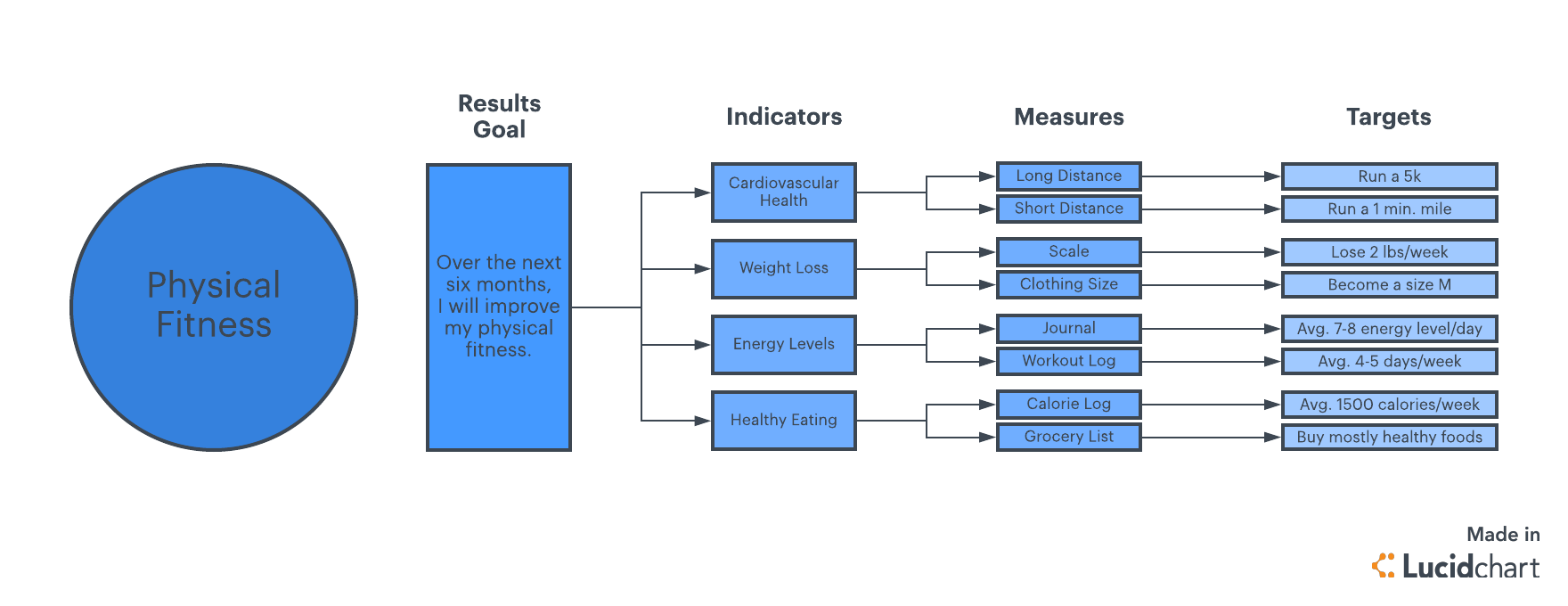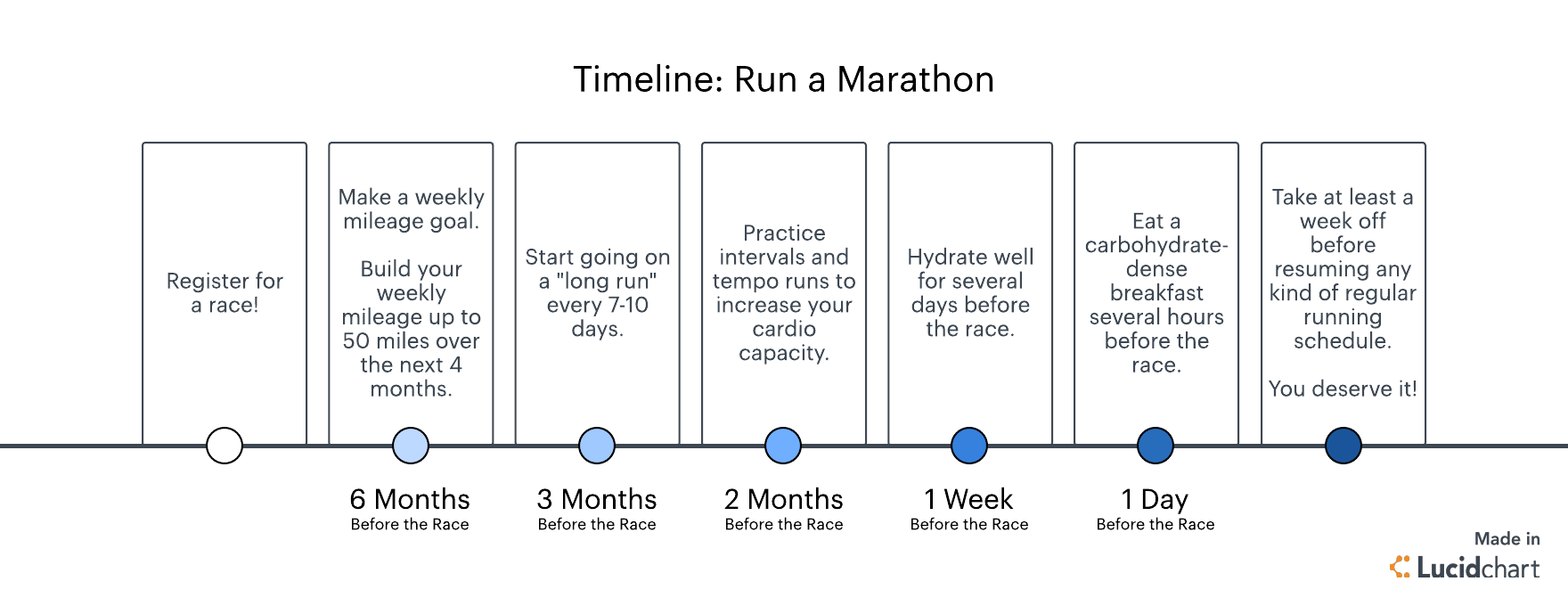Get SMART: How to Finally Complete Your Goals with the SMART Process
Lucid Content
Reading time: about 5 min
Topics:
Are you one of those people who sets a goal for themselves, but never manages to meet it? Don’t worry—you’re not alone. A study from the University of Scranton shows that only 8% of people who set goals actually meet them.
So how can you be a part of that 8%?
Set SMART goals.
By setting SMART goals, you can focus on what you genuinely want and meet your goals every time. According to a study from Michigan State University, 76% of people who wrote down their goals and their course of action successfully achieved their goals—only 43% of those with unwritten goals successfully completed them.
What are SMART goals?
How are SMART goals different from regular goals? SMART goals encourage you to turn your aspirations into more actionable objectives so you can clearly see the progress you have made. To make sure that you can achieve a goal, you should ask whether your goal is:
- Specific
- Measurable
- Attainable
- Relevant
- Time-bound
The SMART method gets rid of the vague parts of traditional goal setting and brings structure. For example, when you set a goal using regular methods, the process stops once you’ve set a goal. The SMART process breaks down your goal and creates steps for achieving it.
If your goal doesn’t meet every SMART criterion, you may want to consider adjusting your course of action. If you have chosen specific, measurable goals that are relevant to your job or interests but you don’t have the time or the resources needed to achieve it, it’s not SMART.
Suppose your business wants to increase revenue by 10% before the end of the quarter, in order to stay ahead of the competition. You and your team work together to create a schedule, an action plan, and a way to track your progress. So far, the goal is specific, measurable, relevant, and time-bound. However, you realize that your quarter ends in only two weeks and there’s not enough time to increase your revenue by that much. Your goal is no longer attainable.
To ensure your goals are SMART, create a checklist that includes the SMART criteria and check your goal against it. Use the template below as inspiration.

How to use the SMART method
Once you’ve identified the overall goal you want to reach, it’s time to break it down using the SMART method.
Specific
You need to know exactly you want to achieve. Try answering the five W’s:
- Who’s involved?
- What do I want to accomplish?
- When do I want to achieve this?
- Where does my goal take place?
- Why is the goal important?
The more specific you are, the greater the chance you’ll get exactly what you want. To help you narrow down your goals, consider using a tree diagram. These diagrams can help you organize your thinking and zero in on what it is you want to achieve.

Measurable
The biggest purpose of SMART goals is to create a goal that you can reach. But how can you reach it if you have no way of tracking your progress?
To set successful measurements, you need to have concrete evidence. Being happier isn’t concrete. Not smoking anymore or eating vegetables every day is. The “M” in SMART goes right along with the “S”—if you have a way to measure your goal, you can then make it more specific. For example, if you want to increase revenue, you should attach a dollar amount or percentage to that goal.
Attainable
Is your goal something you can actually do? We often fail to meet goals because they weren’t achievable in the first place. To figure out whether your goal is attainable, ask yourself if you can still meet it with the time and resources you currently have.
If you don’t have the right resources, adjust. Find something you can achieve with what you have. A good goal should stretch your limits but still be achievable.
Relevant
A goal needs to be important enough to you that you want to meet it. If you say you want to run a marathon but you hate running, you’ll want to stay home and watch Netflix every time you need to go to the gym and practice. In this instance, recognize what you really care about—living a healthier lifestyle or losing weight—and choose a fitness goal that you won’t hate.To help you determine if your goal is relevant, take a look at the following questions:
- Does this seem worthwhile?
- Is this the right time?
- Does this goal align with my other goals?
- Am I the right person to be working on this?
If you answer “no” to any of these questions, reconsider your goal.
Time-bound
One of the biggest reasons people don’t complete their goals is because the goal doesn’t have an end date to keep the person accountable. We may say we want to lose weight or double our sales, but we don’t give ourselves a target date to work towards. In the SMART process, an end date is crucial to completing your goals.
To keep yourself on track, create a timeline in Lucidchart. This template can help you plan out your goal from start to finish. Then you can go back and reference it at any time to see how close you are to completing your goal.

What’s next?
Now that you understand what SMART goals are, it’s time to put yours into action. This is the hardest part of the goal-setting process: to stop planning and start acting.
The SMART method can increase your confidence because you have confirmed that you can achieve the goal and set a plan in motion.
To help you get started, take advantage of the templates available in Lucidchart.
About Lucidchart
Lucidchart, a cloud-based intelligent diagramming application, is a core component of Lucid Software's Visual Collaboration Suite. This intuitive, cloud-based solution empowers teams to collaborate in real-time to build flowcharts, mockups, UML diagrams, customer journey maps, and more. Lucidchart propels teams forward to build the future faster. Lucid is proud to serve top businesses around the world, including customers such as Google, GE, and NBC Universal, and 99% of the Fortune 500. Lucid partners with industry leaders, including Google, Atlassian, and Microsoft. Since its founding, Lucid has received numerous awards for its products, business, and workplace culture. For more information, visit lucidchart.com.
Related articles
5 steps of the strategic planning process
Implement the strategic planning process to make measurable progress toward achieving your company’s vision and make decisions that will keep you on the path to success for years to come.
6 steps to enhance your employee review process
92% of employees agree that they would be better motivated by more constructive feedback. Follow these steps for a more effective employee performance review.
